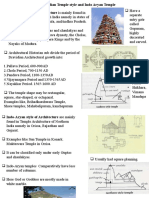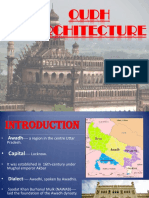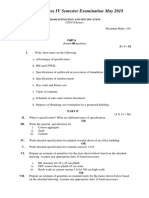MODULE – 1
Dravidian Architecture : Chola – Tanjore style, Pandya – Madhura style, Kailasanantha,
Brihdeshwara, Sriranganm, Vijayanagara (Example Hampi)
Indo-Aryan Architecture: Orissan (Example:Lingaraja and sun Temple Konark) Khajuraho
(Example: Kandariya Mahadeva Temple), Gujarat (Example :Sun Temple, Modhera)
INTRODUCTION - TEMPLE ARCHITECTURE
A temple in India is a place where the devotee can meet a representation of the Lord , pray and ask for
blessings. A devotee may also celebrate music and dance and festivals in the temple. It is also a place for
meditation and spiritual connect. Temples are places where Puja is performed. Hindu temples depict Good,
Evil and Man. Hindu temples were initially built in Kshetras or holy places and near Thirtas or holy water
bodies.
Temples in India may be simple like a small house or grand like a palace. The simple and small temples are
built around shrines and are places where the common man goes for regular prayer and spiritual connect. The
large and grand temple complexes were monuments built by kings honouring a deity , displaying intricate
architecture. These became centres of commerce and religion.
The temple site
A temple is normally built near a body of water such as streams and rivers, lakes and the sea. If water was not
naturally present, then normally a well or a temple tank was built. Temples are also built on mountain slopes
and hilltops.
Vastu Shastra
These are temple building manuals. These ancient texts describe how temples and homes are to be built with
proper positioning of doors, windows, hallways, kitchens and sanctum sanctorum.
The temple plan
A typical Hindu temple is constructed as a perfect
square, the square representing the divine. The
circle that circumscribes this perfect square
represents the earthly. Large temples are often
built on an 8X8 square grid consisting of 64
squares. These sub-squares are called Padas.
Padas
The central squares are dedicated to Brahman. The
first concentric square surrounding the Brahma
Pada is called Devika Pada, dedicated to good or
Devas. The concentric square surrounding the
Devika Pada is the Manusha Pada dedicated to
man. The last concentric square surrounding the
Manusha Pada is the Paisachika Pada representing
evil or the Asuras. In large Indian temples the three
Padas are decorated with murals, paintings and
carvings.
Garbhagriha
�At the centre of the Brahma Padas is the Garbhagriha, a small windowless enclosed space in a square shape
which represents the universal spirit or Purusha. This is the sanctum sanctorum wherein an idol or Murthi
may be placed. This is the main deity of the temple.
Shikara or Vimanam
Directly above and rising above the Garbhagriha or Brahma Padas is the spire or tower structure called
Shikara in the north and Vimanam in the South. This is the defining structure in a Hindu temple and is
normally the most visible part of the temple.
Antarala
Antarala is a vestibule or an antechamber between the Garbhagriha and the Mandap. It is more commonly
found in northern Indian temples.
Mandapa
Mandapa refers to the pillared outer hall or
pavilion. These could serve as waiting and
assembly rooms for devotees(Asthana Mandapa ).
Some Mandapas are called Kalyana Mandapas
which symbolize the marriage of God with
Goddess. Some were used for music, dance and
prayer meetings.
Amalaka
An Amalaka is the stone disk that sits on top of
the Shikara or Vimanam. It may represent a lotus
or the sun. On top of this is normally the temple
banner or flag.
Gopuram
The Gopuram refers to elaborate gate-towers
commonly seen in South Indian and Dravidian
temples. These are often larger than the Shikara or Vimanam.
Sthala Vruksham
The sacred tree of the temple. Many temples in India would have an associated sacred tree which is also
worshipped. Sometimes idols of Nagas or serpent gods are placed near the tree.
Vahana
Temples also have a temple chariot or Vahana, on which the idols of the deity are taken out on procession.
































































































